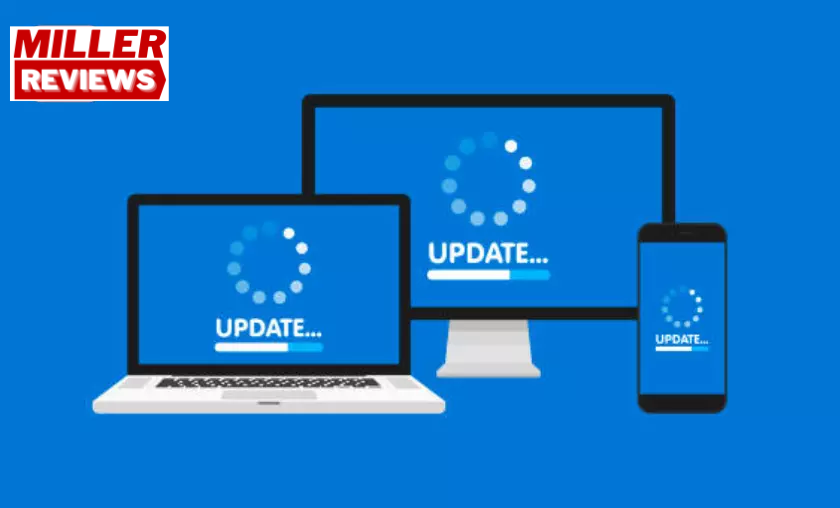According to the National Cyber Security Alliance, 60% of small and medium businesses face a bleak fate within six months of a cyberattack. Even prominent corporations such as Target, Equifax, and JPMorgan Chase have suffered immense damage from these malicious assaults.
Undoubtedly, safeguarding your business against hackers necessitates prioritizing network security. While it represents merely a single instrument in cybersecurity, adequate network security is foundational in erecting barriers that keep malicious actors at bay.
In this article, we shall delve into the fundamental principles of network security and unveil several best practices aimed at fortifying your corporate network against the nefarious intentions of hackers.
Table of Contents
What Is Network Security?

Network security refers to the comprehensive measures and protocols to protect a company’s computer network from unauthorized access, data breaches, and other potential threats. It is a critical aspect of cybersecurity, as it focuses on creating a secure infrastructure that safeguards sensitive information and resources from the ever-evolving tactics of malicious actors. Network security has become paramount in today’s interconnected world, where businesses rely heavily on digital systems and online communication. Organizations expose themselves to severe risks without robust network security measures, including financial losses, reputational damage, and legal ramifications.
Network security encompasses various layers of defense mechanisms designed to detect, prevent, and mitigate potential threats. These defenses can include firewalls, intrusion detection systems, encryption protocols, authentication mechanisms, and vulnerability assessments. By implementing a multi-faceted approach to network security, businesses can establish a strong line of defense that protects their critical assets and ensures the continuity of their operations.
Network security is an ongoing process that requires constant monitoring, updates, and adjustments to stay ahead of emerging threats and vulnerabilities. It is not a one-time investment but rather a proactive strategy that requires continuous efforts to adapt to the ever-changing landscape of cybersecurity.
Why Is Network Security Important?

Network security is of utmost importance in today’s digital landscape, where cyber threats loom large and pose significant risks to businesses of all sizes. The ramifications of a network breach can be devastating, leading to financial losses, compromised customer data, tarnished reputation, and even legal consequences. With the increasing sophistication of cyberattacks, organizations must recognize the criticality of network security in preserving the integrity and confidentiality of their sensitive information.
One of the primary reasons why network security is vital is the protection of valuable data. Data has become a valuable asset in the digital age, and unauthorized access or leakage can result in severe consequences. By implementing robust network security measures, businesses can ensure that their data remains secure, guarded against unauthorized access, and protected from potential breaches. Network security also plays a crucial role in maintaining the trust of customers and partners.
In a climate where data breaches are widely publicized and consumer privacy concerns are at an all-time high, organizations prioritizing network security demonstrate their commitment to safeguarding customer information, fostering trust, and preserving their brand reputation. Moreover, network security measures are often required to comply with industry regulations and legal standards, making it an essential aspect of business operations.
Network Security Basics

Understanding the basics of network security is crucial for any organization looking to protect itself from the ever-present threats of cyberattacks. Network security involves implementing various measures and practices to safeguard a company’s computer network from unauthorized access, data breaches, and malicious activities. By grasping these fundamental concepts, businesses can establish a solid foundation for creating secure and resilient network infrastructure.
One essential aspect of network security is the use of firewalls. Firewalls are a barrier between trusted internal and external networks, filtering incoming and outgoing traffic based on predetermined security rules. This helps prevent unauthorized access and blocks potentially harmful content from infiltrating the network.
Additionally, encryption plays a vital role in network security. By encrypting sensitive data during transmission, businesses can ensure that the data remains unreadable to unauthorized individuals even if intercepted. Encryption protocols, such as Secure Sockets Layer (SSL) and Transport Layer Security (TLS), provide a secure channel for data exchange, adding an extra layer of protection against eavesdropping and tampering.
By familiarizing themselves with these network security basics, organizations can take the necessary steps to fortify their networks and reduce the risk of falling victim to cyber threats. Implementing firewalls, employing encryption, and staying up-to-date with best practices are essential elements in creating a robust network security posture that safeguards valuable assets and ensures the integrity and confidentiality of data.
Network Security Best Practices Checklist
Each company may employ distinct procedures in safeguarding an internal network, yet several universal best practices can be embraced.
Keep an Eye on Traffic: Monitoring and Logging

By diligently monitoring and analyzing network usage, many security concerns can be unveiled, ranging from internal breaches to compromised user accounts. For instance, if a device abruptly starts transmitting data incessantly at maximum capacity, it should raise red flags. This unusual behavior might signify data exfiltration or even the sharing of video footage, necessitating prompt attention. By closely scrutinizing network usage, companies can proactively investigate potential issues, preventing them from escalating beyond control.
To accomplish effective monitoring and logging, organizations can employ the assistance of an intrusion detection system, which can take the form of either software or a physical device, depending on the intricacies of their network infrastructure.
Apply the Principle of Least Privilege

Security experts adhere to the guiding principle of least privilege to mitigate the potential for substantial harm caused by compromised devices, accounts, or individuals. Within network security, this principle entails granting each device the minimal access necessary to interact with others. For instance, shared files residing within a network file system should only be accessible to those individuals who require access for job-related purposes.
Effective implementation of the principle of least privilege necessitates a robust authentication system. Organizations that already verify user identity across all network resources possess the capability to fortify these resources, thereby ensuring stringent access controls effortlessly.
Use Encryption, Even on Internal Sites

Encryption allows data traversing a network to be safeguarded against unauthorized access or tampering. To avert the risk of a malicious or compromised device gaining unfettered access to all transmitted information, companies must prioritize the implementation of in-transit encryption. This can be accomplished by utilizing HTTPS, a protocol that employs the TLS encryption standard to fortify data while in motion.
A common oversight observed in many companies is the failure to utilize HTTPS for intranet sites. Often, such organizations operate under the assumption that all devices within the internal network are inherently trustworthy. However, this assumption becomes increasingly fragile as more widgets are added to the network. Although implementing HTTPS internally may entail some complexities compared to its external usage, its substantial security advantages, particularly within more extensive networks, make it a crucial undertaking.
Update Everything

It’s inevitable that every piece of IT infrastructure deployed within your company will encounter security vulnerabilities at some stage. Neglecting to update crucial components such as networking equipment, servers, laptops, and smartphones creates an open invitation for hackers to exploit weaknesses within the system, potentially gaining unauthorized access. In contrast, a diligently patched network significantly raises the barrier to unauthorized intrusion.
Automated remote management technology is one effective method for ensuring timely software updates. This powerful tool enables organizations to enforce and streamline applying necessary updates across various devices. Like the well-known practice of mobile device management in endpoint security, network security also benefits from analogous techniques. Routers, switches, and firewalls can all be remotely managed and updated, bolstering the overall security posture of the network infrastructure.
Segregate Device Types & Access Levels

Virtually all network equipment possesses the inherent capability to partition a physical network into numerous isolated subnets. This invaluable security feature effectively erects impenetrable barriers, preventing a compromised device within one subnet from infiltrating and accessing devices or data in other network segments.
The significance of network segregation becomes particularly pronounced with the advent of Internet of Things (IoT) devices within organizational environments. Given the ease with which many IoT products can be compromised, it is imperative to confine their presence within a designated network section that houses no critical data or vital hardware. By doing so, potential vulnerabilities in these devices are contained, limiting the potential impact of security breaches and fortifying the overall network resilience.
Control Privileged Users

As companies witness the expansion of their network infrastructure to accommodate new applications, servers, and network devices, the challenge of effectively controlling, managing, and auditing user access can become daunting.
To address this concern, Privileged Access Management (PAM) tools offer an invaluable solution. These tools empower companies to exert granular control over privileged users, including system administrators, contractors, and third parties while centralizing access to network devices and servers. By implementing a PAM system, organizations can bolster their security measures by establishing a single access gateway, streamlining authentication processes, and minimizing potential vulnerabilities. Moreover, administrators gain the ability to monitor and meticulously record all connections and activities, facilitating change tracking, audits, and even training purposes.
With the aid of PAM tools, companies can efficiently navigate the intricate landscape of user access management, fortify their network security, and establish comprehensive visibility into network activities.
Automate Network Compliance

In today’s landscape of multiple internal and external network security standards, the automation of network audits has emerged as a top priority for organizations. Compliance with standards such as PCI DSS, SOX, NIS, HIPAA, and ISO27001 necessitates implementing and ongoing monitoring of distinct compliance requirements. However, manually configuring network audit tools and checklists to meet these compliance standards can be time-consuming and resource-intensive.
Recognizing this challenge, adopting automated compliance monitoring has gained significant traction. By leveraging automation, organizations can save valuable time and streamline the complexity associated with compliance audit procedures. Computerized tools enable continuous security compliance monitoring, ensuring adherence to various standards without laborious manual configuration. This approach reduces the strain on resources and simplifies the overall compliance management process, empowering organizations to stay resilient in the face of evolving security requirements.
Conclusion
Network security is a pivotal component of any organization’s comprehensive cybersecurity arsenal. It assumes the critical responsibility of fortifying defenses against external intruders and thwarting attacks from compromised devices within the network.
Regrettably, many companies fall short when allocating sufficient resources to bolster network security. However, it’s crucial to recognize that proper network security is an insurance policy safeguarding against many costly and detrimental cyberattacks. Consequently, investing in robust network security measures becomes prudent, yielding long-term benefits and protecting the organization’s digital assets.
A diverse array of strategies, ranging from fundamental practices like timely infrastructure updates to more intricate tasks such as monitoring and logging traffic patterns, alongside the automation of compliance checks, can significantly enhance the security posture of corporate networks. Embracing these measures demonstrates a proactive approach towards fortifying Network Security, enhancing resilience, and mitigating potential risks posed by ever-evolving cyber threats.
For More amazing articles related to Tech Check out our website Over Here
To Read more similar articles click here
Thanks for visiting our Website. If you appreciate our work, kindly show us some support in our comments section 🙂